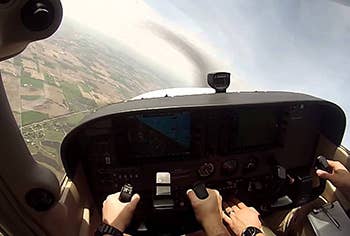
During stall recovery training, fighting the urge to use the aileron to overcome a sudden wing drop can take forethought and even sheer will power on the part of the student pilot. In a true stall emergency, which can take us completely by surprise, picking up a dropping wing with the aileron can be an instinctual, but also a very dangerous, reaction.
Most light airplanes are designed with wings that stall progressively outward from the wing roots to the wingtips. This provides a measure of aileron control even in a stall as the wingtips continue to provide some degree of lift and the ailerons still have some control effect.
But use of the ailerons requires finesse to avoid aggravating a stall. For example, if the right wing drops during the stall and excessive aileron control is applied to the left to raise the wing, the aileron deflected downward would suddenly produce a greater angle of attack — and quite possibly a more complete stall at the tip as the critical angle of attack is exceeded.
The increase in drag created by the high angle of attack on that wing might also cause the airplane to yaw, resulting in a sudden spin in that direction.
So how should you recover from a stall?
First, it's important to maintain coordinated flight with the rudder throughout the stall. Next, immediately lower the nose and add power to restore airflow over the wing and reduce the angle of attack. This will make your ailerons effective once more, allowing you to safely correct for a wing drop.
Get exclusive online content like this delivered straight to your inbox by signing up for our free enewsletter.
We welcome your comments on flyingmag.com. In order to maintain a respectful environment, we ask that all comments be on-topic, respectful and spam-free. All comments made here are public and may be republished by Flying.

Sign-up for newsletters & special offers!
Get the latest FLYING stories & special offers delivered directly to your inbox






